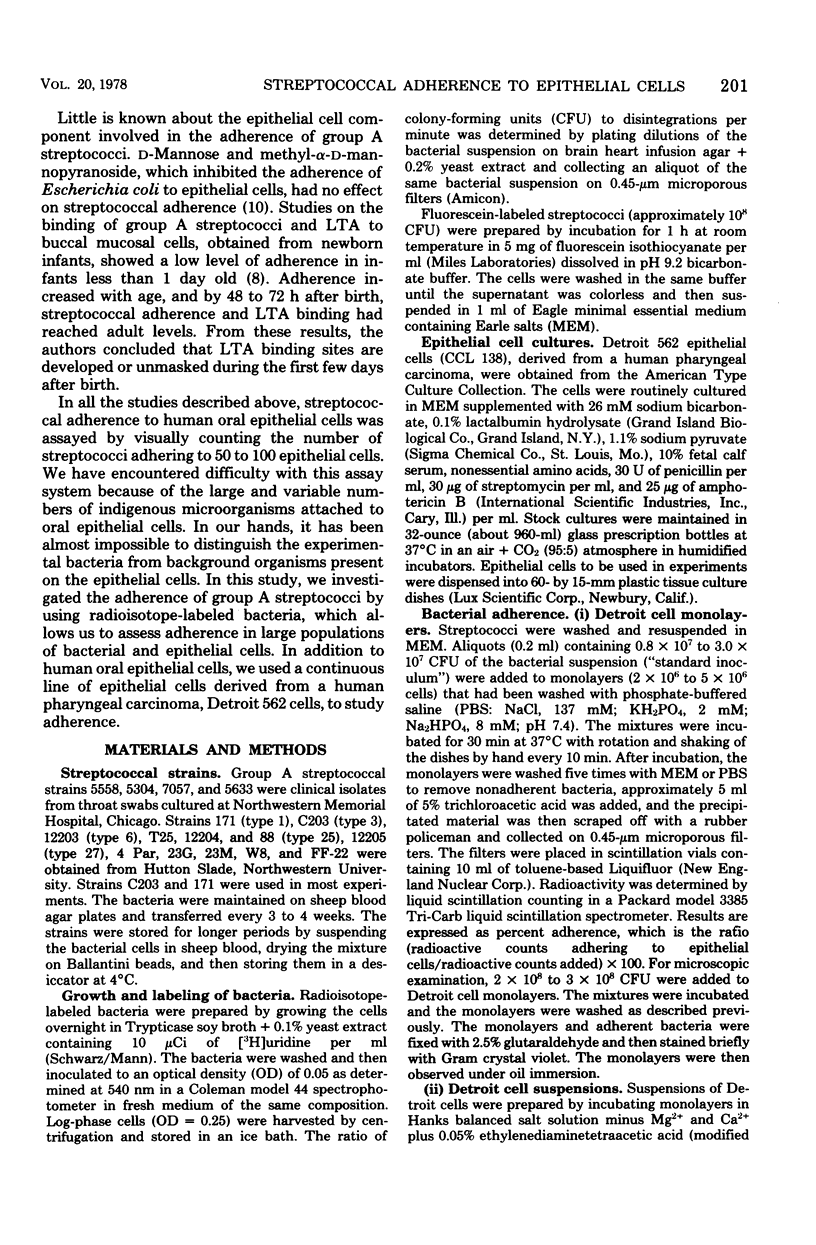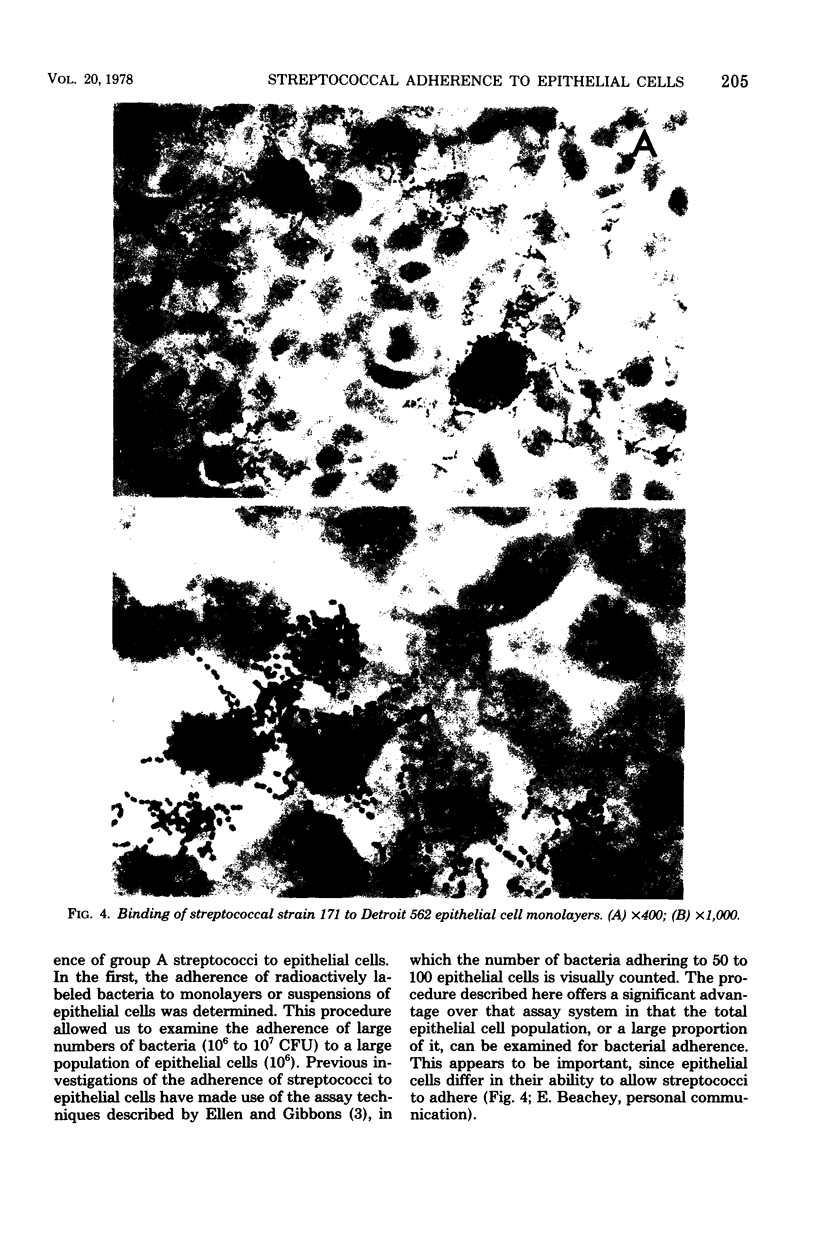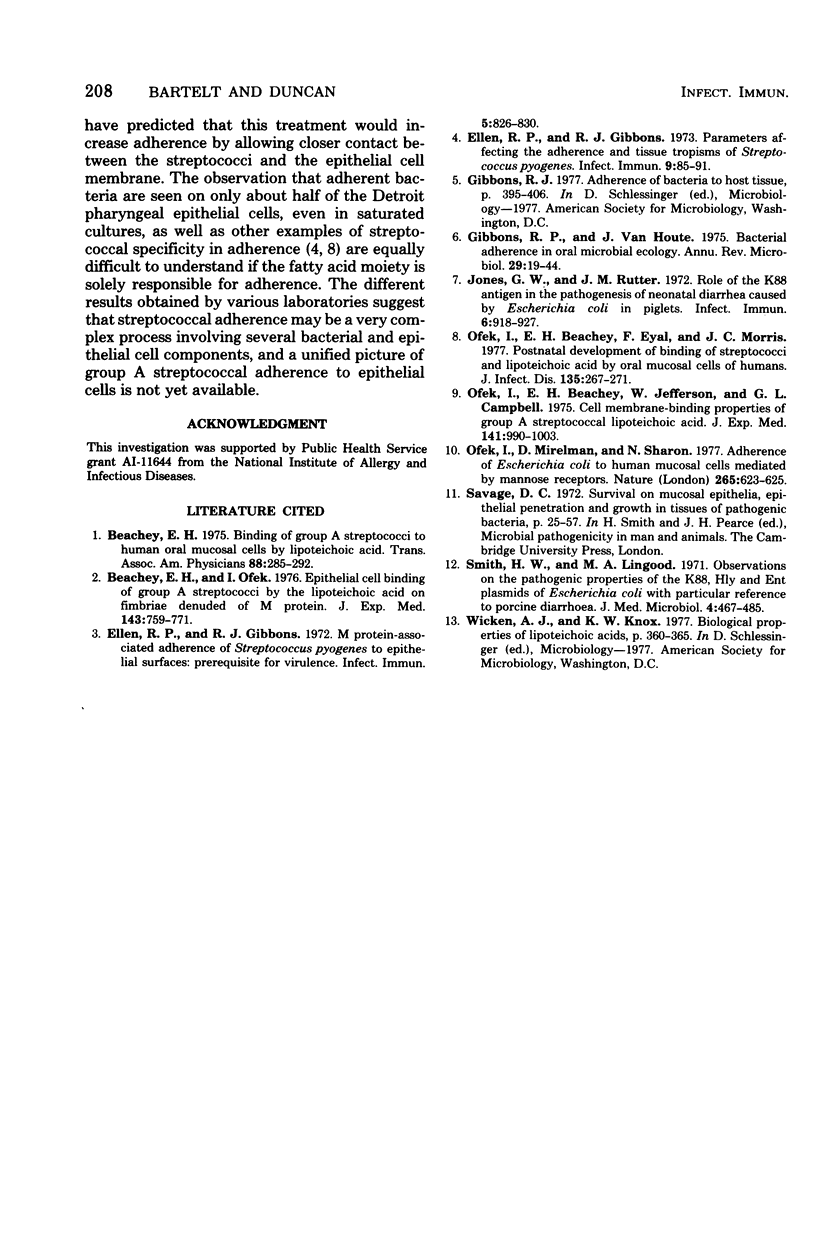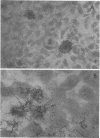Abstract
The adherence of group A streptococci to epithelial cells was studied by using streptococcal strains labeled with [3H]uridine or fluorescein isothiocyanate. The ability of the labeled organisms to adhere to Detroit 562 epithelial cells, derived from a human pharyngeal carcinoma, as well as to epithelial cells scraped from the oral cavity was determined. Adherence to monolayer cultures or cell suspensions of Detroit cells compared favorably with adherence to suspensions of human oral epithelial cells. Initial experiments to determine the optimal conditions for adherence showed that adherence was temperature dependent and that the optimal incubation time was 15 min for adherence to epithelial cells in suspension and 30 to 60 min for monolayer cultures. Both streptococci and epithelial cells exhibited specificity in the adherence process. Different streptococcal strains varied in their ability to adhere. Adherence was also affected by the growth stage of the bacterial cultures. Trypsin treatment of the streptococci slightly decreased adherence, whereas hyaluronidase treatment increased the adherence of some strains. Streptococci were found to adhere to only about half of the epithelial cells. Those epithelial cells apparently have a limited number of receptor sites since they can be saturated by adding increasing concentrations of bacteria. Further support for limited receptor sites was provided by competition experiments. Adherence was inhibited by trypsin treatment of the epithelial cells, suggesting that proteins in the epithelial cell membrane may play a role in streptococcal adherence.
Full text
PDF








Images in this article
Selected References
These references are in PubMed. This may not be the complete list of references from this article.
- Beachey E. H. Binding of group A streptococci to human oral mucosal cells by lipoteichoic acid. Trans Assoc Am Physicians. 1975;88:285–292. [PubMed] [Google Scholar]
- Beachey E. H., Ofek I. Epithelial cell binding of group A streptococci by lipoteichoic acid on fimbriae denuded of M protein. J Exp Med. 1976 Apr 1;143(4):759–771. doi: 10.1084/jem.143.4.759. [DOI] [PMC free article] [PubMed] [Google Scholar]
- Ellen R. P., Gibbons R. J. M protein-associated adherence of Streptococcus pyogenes to epithelial surfaces: prerequisite for virulence. Infect Immun. 1972 May;5(5):826–830. doi: 10.1128/iai.5.5.826-830.1972. [DOI] [PMC free article] [PubMed] [Google Scholar]
- Ellen R. P., Gibbons R. J. Parameters affecting the adherence and tissue tropisms of Streptococcus pyogenes. Infect Immun. 1974 Jan;9(1):85–91. doi: 10.1128/iai.9.1.85-91.1974. [DOI] [PMC free article] [PubMed] [Google Scholar]
- Gibbons R. J., Houte J. V. Bacterial adherence in oral microbial ecology. Annu Rev Microbiol. 1975;29:19–44. doi: 10.1146/annurev.mi.29.100175.000315. [DOI] [PubMed] [Google Scholar]
- Jones G. W., Rutter J. M. Role of the K88 antigen in the pathogenesis of neonatal diarrhea caused by Escherichia coli in piglets. Infect Immun. 1972 Dec;6(6):918–927. doi: 10.1128/iai.6.6.918-927.1972. [DOI] [PMC free article] [PubMed] [Google Scholar]
- Ofek I., Beachey E. H., Eyal F., Morrison J. C. Postnatal development of binding of streptococci and lipoteichoic acid by oral mucosal cells of humans. J Infect Dis. 1977 Feb;135(2):267–274. doi: 10.1093/infdis/135.2.267. [DOI] [PubMed] [Google Scholar]
- Ofek I., Beachey E. H., Jefferson W., Campbell G. L. Cell membrane-binding properties of group A streptococcal lipoteichoic acid. J Exp Med. 1975 May 1;141(5):990–1003. doi: 10.1084/jem.141.5.990. [DOI] [PMC free article] [PubMed] [Google Scholar]
- Ofek I., Mirelman D., Sharon N. Adherence of Escherichia coli to human mucosal cells mediated by mannose receptors. Nature. 1977 Feb 17;265(5595):623–625. doi: 10.1038/265623a0. [DOI] [PubMed] [Google Scholar]
- Smith H. W., Linggood M. A. Observations on the pathogenic properties of the K88, Hly and Ent plasmids of Escherichia coli with particular reference to porcine diarrhoea. J Med Microbiol. 1971 Nov;4(4):467–485. doi: 10.1099/00222615-4-4-467. [DOI] [PubMed] [Google Scholar]



